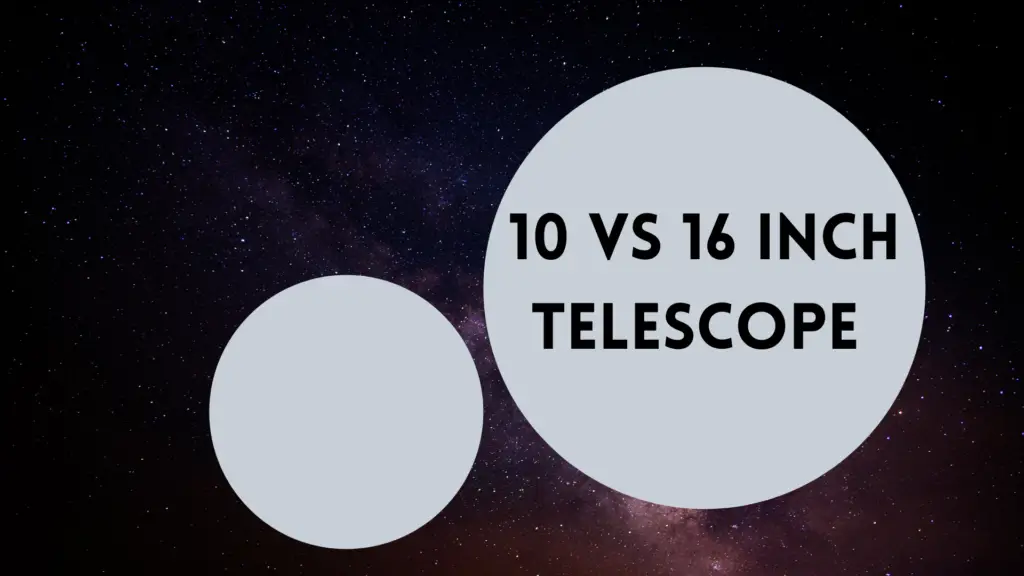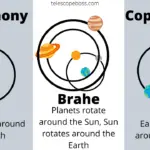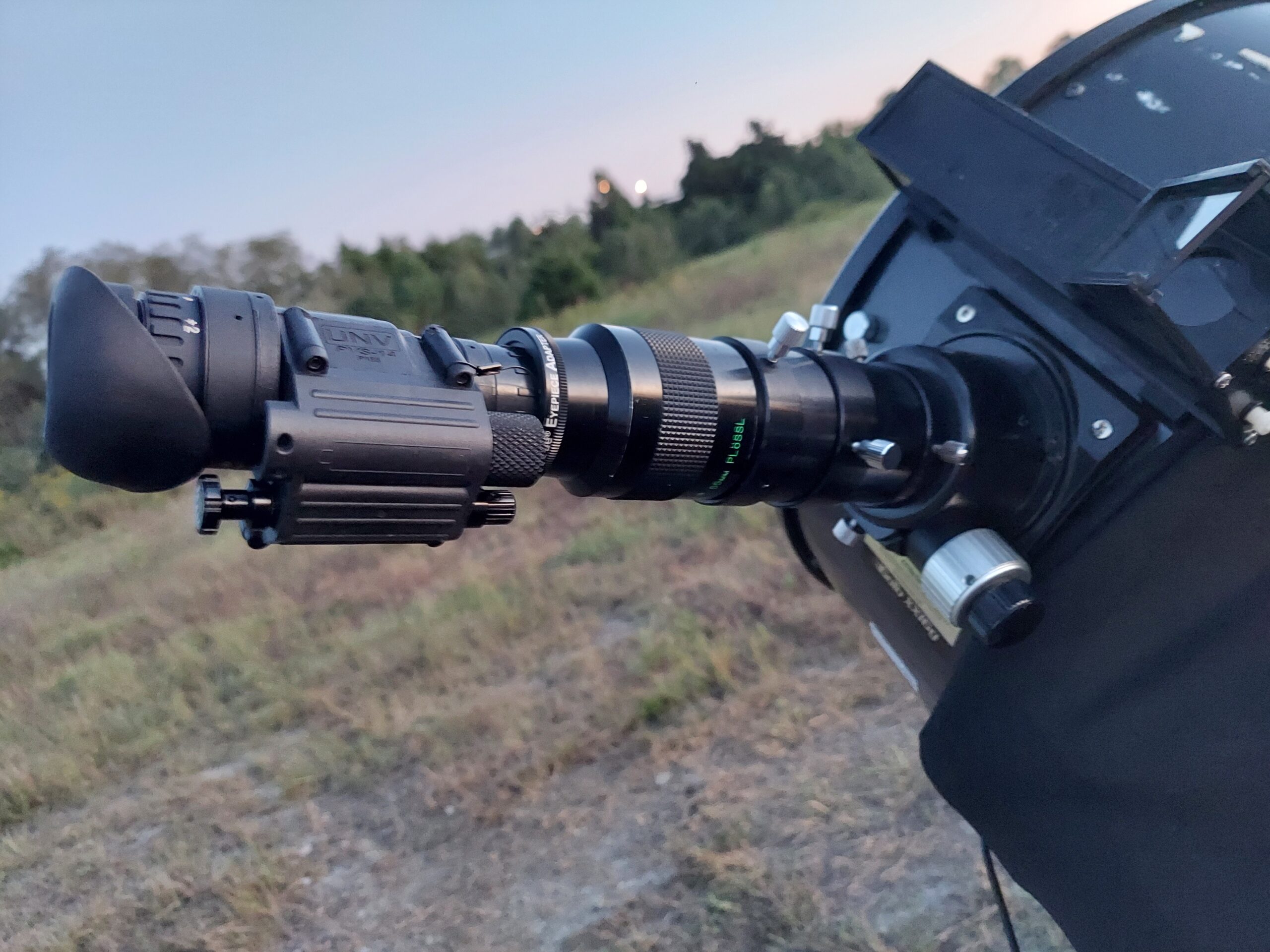A large telescope means that you can collect more light and see dimmer objects. A 16 inch telescope allows you to see very faint distant objects.
The 16 inches refers to the aperture or light gathering power of the telescope. The aperture is the distance across the mirror of the telescope. A 16 inch telescope is one of the largest telescopes used by amature astronomers, although there are 20+ inch telescopes available for home use.
The larger the aperture the more light the scope can focus to your eye.
This is significant because our eyes need light to be able to distinguish color and detail, so I am able to make out more detail in objects that I am viewing with my 16, than I could with my 10 inch.
When researching my telescope I found out a 16 inch telescope can gather more than 250% more light than my smaller 10 inch.
I started out my astronomy journey with a 10 inch Apertura Dobsonian telescope and I did a lot of research before I upgraded to a 16 inch truss tube Dobsonian telescope.
I have only been involved in the hobby for about 3 years. I am still very much learning the night sky, so I am still finding new things when I observe.
A 16 inch telescope can see further into space than a 10 inch making 3x more objects visible with a 16 than a 10, I have not seen too much of the new stuff.
This is because I am still learning. It is important to note that there are things other than the size of your telescope that impact what you can see.

Knowledge
A big part of astronomy is learning what you are looking at and where to find it. If you do not know where to look you will not find much.
Learning the constellations and the movement of the stars is a big part of learning this hobby.
Star hopping or slewing your scope is a great way to start learning the sky. Some of my favorite nights have been when I slew my scope in no particular direction and see what I can find. I recommend that all new astronomers grab a copy of Turn Left at Orion (affiliate link) to start learning the sky.
Weather/ Light Pollution
The cloud cover and light pollution (also known as Bortle score) also have a great impact on what you can observe with a telescope.
Telescopes cannot see through clouds so if the sky is overcast you will not be able to see anything no matter how big your telescope.
Darker skies make more things visible too. The darker the sky the more contrast you will see with the bright objects in the sky.
What Can You See?
There is not much that I can see with my 16 that I could not see with my 10, but the difference in detail and brightness is significant.
I find that I enjoy finding faint objects like M51
Galaxies
While it is possible to see galaxies with smaller telescopes and even with the naked eye, observing galaxies with a 16 inch telescope allows you to see detail and structure.
M82 the Cigar Galaxy has a dust lane through it and I was unable to see it with my 10, but it is visible with my 16.
Planets
Both a 10 and 16 inch telescope will allow you to see the rings of Saturn, the polar ice caps on Mars, the moons of Jupeter and the phases of Venus.
These are all really incredible sites.
While, tit is possible to see all the planets in our solar system with a 10 inch telescope, Uranus and Neptune are very difficult to locate.
I first saw Uranus and Neptune when I upgraded to a 16 inch telescope. I was also going from a manual telescope to a goto. I used the goto to get close to the planets, and found them. They looked very small and faint, then I switched to a higher power eyepiece and I was able to see color.
I had only seen pictures of these planets and they are so far away it was incredible to see them with my own eyes.
Nebula
I enjoy observing Nebula quite a bit. Orion comes to mind first, when I upgraded to a 16, I was able to see blue and purple and detail that I was unable to see with my 10.
You can see the central star in the Ring Nebula in good conditions and dark skies with a 16, but not with a 10.
I am just hoping to give you an idea of what kinds of differences you can expect.
Star Clusters
I host a lot of outreach events and star clusters are targets I like to show when no planets are visible.
M 13, the Hercules Globular Cluster is something I often show and it just pops with a 16.
The double cluster is another showstopper at outreach and with a 30mm eyepiece I can get them both in the same field of view.
Types of 16 Inch Telescopes
While I own a Orion 16XXG, a truss tube Dobsonian telescope, there are other ways to get the 16 inch aperture.
Modified Schmidt Cassegrain
Schmidt Cassegrain telescopes have shorter optical tubes making it possible for them to be mounted on an equatorial mount for astrophotography.
The Meade 16 LX 600 ACF f/8 is the only example of this I was able to find, but if you need a solid tube, this may be it. The telescope is 202 pounds, and 318 with the field tripod.
I have heard some guys say that the 14 inch can be unwieldy on the mount, so it is possible that you may have trouble lifting the 16 onto a mount.
Ritchey-Chretien Astrograph Telescope
This is a very interesting version of a 16 inch telescope. They are designed for astrophotography and are able to be mounted on many types of mounts.
Ioptron 16 iOptron Truss Tube weighs 127 pounds. It would have to be lifted onto a mount, so consider that when designing your set up.
Truss Tube Dobsonian
This is the most affordable way to get 16 inches of aperture. These telescopes move on an Alt-Azimuth Dobsonian base. This type of mount is not generally preferred for astrophotography, but there are ways to photograph with a Dobsonian .
Many companies make versions of the truss tube Dobsonian. I have the Orion, but there are ultralites that break down easily and are easier to transport.
Hubble Optics Ultra Lite 16 inch system weighs just 60 pounds.
How to transport a 16 inch Dobsonian Telescope?
I travel almost every time I observe. I ordered the cases that came with my telescope and they make transportation very easy.
Most telescopes can be transported in any vehicle, even very large telescopes can be transported by sedan.
I transported my 10 inch in the back of my Honda Civic, and I can still use the Civic to transport my 16. We have a large family so it is more often transported in our Chevy Express where there is plenty of room.
When considering transportation dont forget all your accessories:
Eyepiece Case
Observing Chair
Dew Heater and
Power Bank
These large necessities will need to fit in the car too!
I took a lot of measurements when I was shopping for my next scope.
Be careful with apertures above 16 as they may require a larger vehicle, a trailer or wheelbarrow handles to transport these telescopes.
You can read about how I transport my telescopes and how to use a trailer to haul a very large telescope.
Light Pollution and Observing
In some ways light pollution and seeing conditions are more important than aperture when talking about what you can see.
In summer 2021 I visited a friend who lives in rural Missouri and I had my 10 inch Dobsonian. I could see things there that I cannot see in my Bortle 4 skies and a 16.
It has been said before, but the best way to observe is to get to the darkest skies available. There is no amount of equipment that you can buy that will give you a better result than a very dark sky.





